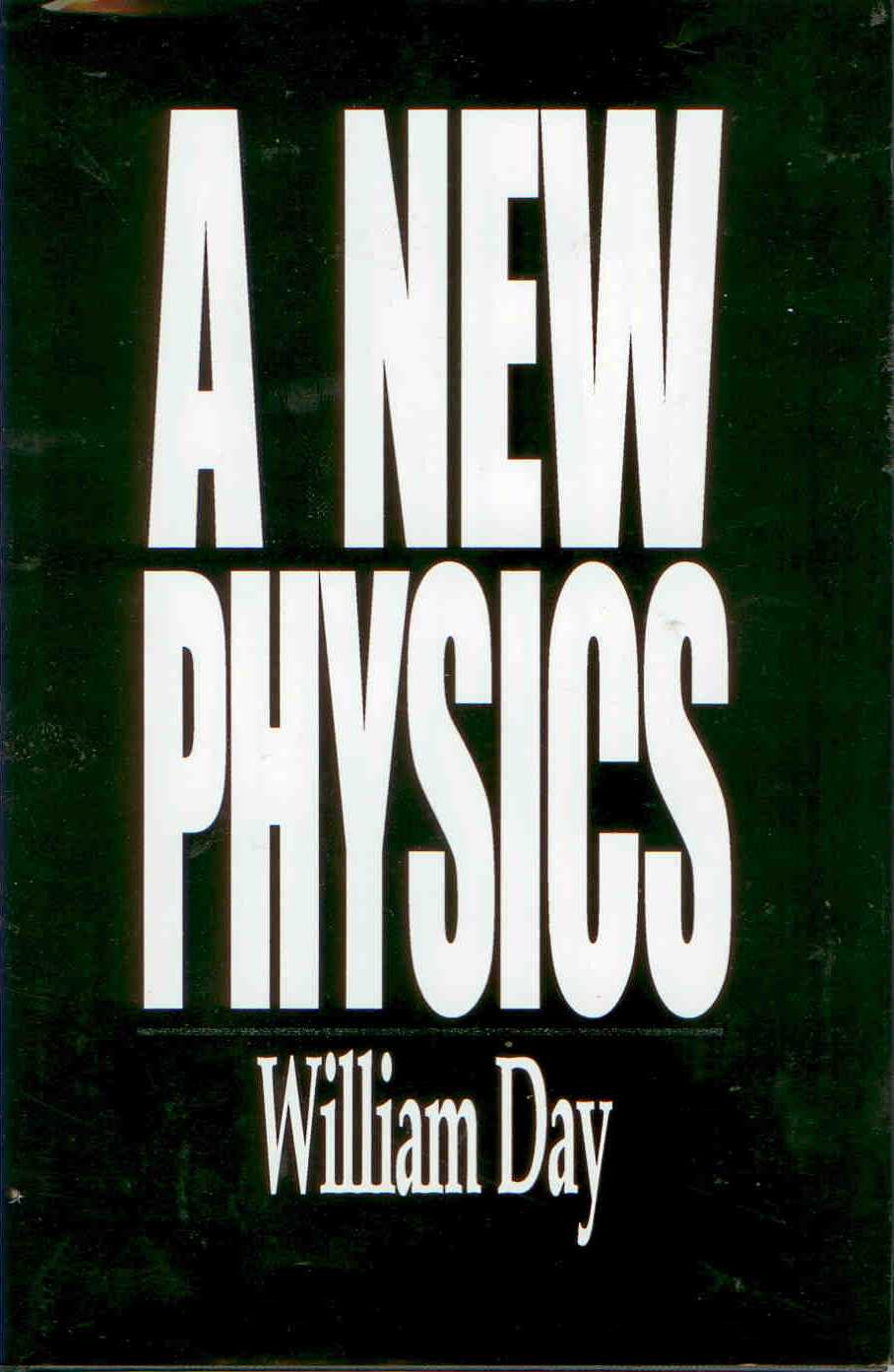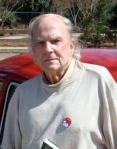Motion is not what we think it is!
Those who explore the world of science know that the whole enterprise has but one permanent aspect: like it or not, what we know to be true is always changing. This is, of course, disconcerting to those who are emotionally attached to the explanations of nature they have learned in the past. Real progress in any kind of inquiry is always hindered by what we already think we know and, perhaps more importantly, our experiences that are shaped by this knowing.
Those who explore the worlds of bodywork and movement therapies are also familiar with uncertainty--when you have achieved some conviction about how the human body really works, there is a big surprise in store for you, often with your next client.
A New Physics is written by a chemist, William Day, and is published by a pioneer in the exploration of somatics, Marvin Solit. The reviewer attaches importance to this collaboration because of a belief that physics and the other sciences have suffered greatly from being detached from the wisdom of the living body. - From Summary by Jim Oschman (http://www.fnd.org/pgs/physics/newphysics_review.htm)
By Hal Fox:
The day this book was received in the mail, I had been having a vigorous (but friendly) discussion with Dr. S-X Jin. We were discussing the aether as a vast expanse of substance (not matter) that has enormous energy. I made the statement, ?One must keep in mind that all experiments are embedded in this highly-energetic medium.? Dr. Jin observed, ?With that concept, you can explain anything.? Exactly! However, the explanations must be based on logic, the scientific method, and not just supposition.
It was a pleasant surprise to find that Dr. William Day has, as a fundamental part of the New Physics, a universal ?medium? (which is a better name than aether) in which matter is embedded. Day describes how it has been known for over a hundred years that light waves must have an incredibly cohesive (rigid) medium to be able to transmit light waves at 186,000 miles per second. How matter can exist, move, and demonstrate its properties in such a medium is addressed in an astonishingly simple way: ?Matter is disengaged from the medium.? Although light can be emitted by matter and travel through the medium and strike or affect other matter; light, but not matter, can travel through the medium at the speed of light.
Here is a simple experiment. Fasten one end of an elastic material, pull it out a specific distance. Pluck the elastic and note the frequency of vibration. Now using half of the elastic material, stretch it out to the same length as before. Note that when it is plucked the vibration is much higher. That is just a simple analogy that for a medium to allow light to travel so fast, it must be more rigid (more cohesive) than steel. The nature of the disengaged (from matter) medium is its high rigidity and its ability to carry light waves at such high velocities.
The first person I have known to describe atomic electrons as an orbit shell was Dr. Randell Mills in his book, The Grand Unified Theory of Classical Quantum Mechanics, (?1996, published by Blacklight Power, ISBN 0-9635171-2-0). Dr. Day uses a similar model for electron shells around atomic nuclei and makes some interesting calculations to show how the shells are ordered. To me the orbit shell is a much improved model as compared to the concept of a small particle swirling about the nucleus like the moon around the earth.
Another novel concept Day uses in his model of motion, matter, and energy is the predominant place for motion. He explains that motion and the structure of matter are inseparable. This is a powerful concept. For those of us who have been schooled in classical physics, this concept requires some explaining (which Day does most adequately).
Another powerful concept stems from using a minimum number of discrete particles to explain the composition of all matter. A surprising statement is that ?Nature has no forces.? For example, if matter is imbedded in the medium, Day can make the following statement: ?It takes no force for a body to move spontaneously in response to its environment. The nucleus influences the course of its satellites, not by forcing their motion, but by shaping the environment which guides them.? Dr. Day describes how this concept can account for gravity from small to large masses and for the orbiting that occurs in some large body systems.
Day makes the following statement (page 25): ?We need to change the principles upon which the physics is based. The physics of matter and space is different from the physics of motion devised by Newton and Einstein. Dynamics needs to be relegated to its role of measuring the motion of bodies in Newtonian space and a new physics be use to describe the nature of matter.?
Dr. Day has carefully analyzed some of the dogma of physics. For example, the concept of mass being able to increase with velocity is outside of our range of experience. Day states, ??physics does not provide an explanation for mass as we experience it. To suggest that it changes with velocity, therefore, is a detached hypothesis that has to be accepted on faith.?
From this reviewer?s fifty years of trying to comprehend the physical nature of the universe, one major concept has emerged: Too much of modern physics is dogma and must be accepted on faith. The new physics as espoused by William Day is surprisingly free of dogma. However, there are concepts that are so new and, therefore, lacking in experimental proof, that the reader must label these concepts as a part of a developing model subject to experimental challenges.
The historic work by Michelson in setting up experiments to determine the effect on transmitted light by the earth?s rotation through the aether is only half taught in many of our institutions of learning. The work by Michelson and Morley (in 1887), which had negligible results, is frequently cited and strongly used to support the concept that there is no aether. What the experiment actually proved was that the experimental arrangement could not measure the influence of the earth?s motion with respect to the luminiferous aether. Michelson and Gale (in 1925) reported on an improved experiment designed to test: ?Theory of the effect of the rotation of the earth on the velocity of light as derived on the hypothesis of a fixed ether.? The results of this experiment in which ??two hundred and sixty determinations?? were made were positive.
The observed results were 0.230 +/- 0.005 (fringes) and the calculated results were 0.236 +/- 0.002 fringes. An amazingly close agreement between observations and theoretical prediction. Dr. William Day reprints the Michelson-Gale report in an Appendix to his book for which this reviewer applauds the author! Ask yourself the question, ?Why do the scientific professors teach the negative results of the early Michelson-Morley experiment and ignore the extensive data and high accuracy of the Michelson-Gale report?? You will probably consider the same explanation as this reviewer and, I believe, Dr. William Day has reached. The Michelson-Gale data did not fit the currently-accepted model of physics, therefore, the data was ignored and, unfortunately, still is. Dogma is more important than facts in some cases. Fortunately, Day?s model of Physics is free of dogma and explains many of the unexplained experimental observations that are unexplained by current physics.
Dr. William Day has spent well over a decade in publishing his four books as he has developed A New Physics. (Bridge From Nowhere, 1989; Bridge From Nowhere II, 1996; and Holistic Physics, 1998). This book, A New Physics, is highly recommended. It should be made ?must read? for every college freshman before he or she takes their first course in college physics. Then it should be reread after they take college physics. This reviewer believes that in this book lies the foundation (but not all of the answers) for a fundamental improvement in our model of physical reality.



